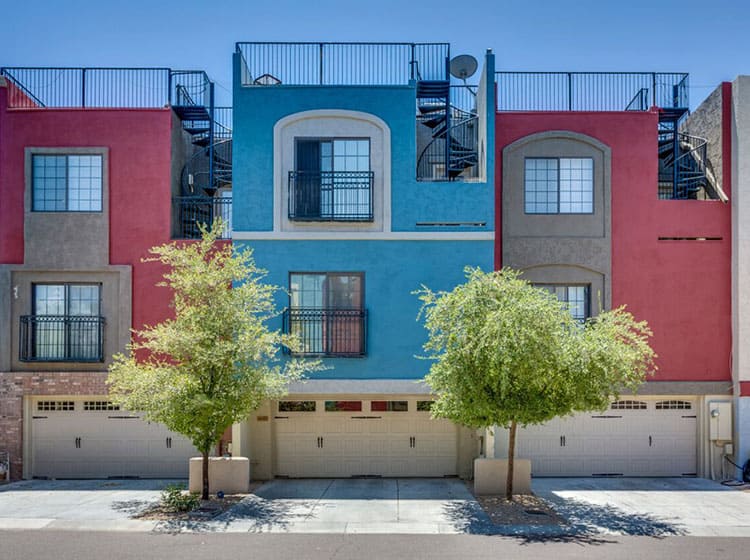Distinguishing Between Exterior And Interior Paint: Major Differences And Their Uses
Distinguishing Between Exterior And Interior Paint: Major Differences And Their Uses
Blog Article
exterior painting st paul -Ratliff Bernstein
When you're selecting between interior and exterior paint, it's important to understand their basic distinctions that affect both performance and visual appeals. Inside paints are crafted for lower VOC degrees and smoother surfaces, making them excellent for indoor areas, while exterior paints are created to withstand rough weather conditions and UV exposure. Each kind offers an unique purpose, yet understanding when to make use of one over the other can greatly influence your task's result. So, what aspects should you consider when making your choice?
Structure and Formulation
When choosing in between exterior and interior paint, understanding their structure and formulation is critical. Read the Full Write-up include a lower quantity of unstable organic substances (VOCs), making them more secure for indoor air high quality. You'll notice they frequently have a smoother coating, which enhances their capacity to withstand discolorations and allows for much easier cleaning. They're made to stand up to the rigors of indoor atmospheres, including varying moisture levels and temperature level fluctuations.
On the other hand, outside paints are formulated to withstand harsher conditions. They typically consist of higher degrees of pigments and ingredients to resist fading from UV rays, as well as to stop mildew and mold growth. Their make-up includes much more binders and materials, which provide far better adhesion to surfaces exposed to the elements. This ensures the paint can withstand rain, snow, and changing temperatures without peeling or cracking.
Efficiency and Longevity
Evaluating efficiency and durability is vital when picking in between exterior and interior paint. Inside paint is made for surface areas that experience much less damage. It usually withstands fading and scuffing, making it ideal for living rooms and rooms. However, professional painters may not stand up well in high-moisture areas like kitchens and bathrooms without proper formula.
On the other hand, outside paint deals with harsher conditions. It's crafted to stand up to UV rays, rainfall, and temperature variations. This sort of paint commonly consists of additives that prevent mold and mold development, making certain long life in numerous environments. When you make use of exterior paint, you can anticipate it to last a number of years much longer than indoor paint, gave it's applied correctly.
One more vital difference lies in the coating alternatives. Inside paints usually have a selection of surfaces for visual appeal, while exterior paints prioritize resilience over shine. If read this article seeking something that can take care of the components, exterior paint is your best choice.
On the other hand, if you're concentrated on interior visual appeals with much less worry for severe problems, interior paint might be suitable. Inevitably, your selection must straighten with the certain needs of the environment.
Aesthetic Considerations
A fresh coat of paint can change a room, but visual considerations play a vital duty in your selection in between exterior and interior alternatives. When you're choosing paint, consider the mood you want to produce. Inside paint allows you to discover a wider series of shades and coatings, allowing you to express your individual style and boost your home's atmosphere. Whether you opt for soft pastels or vibrant colors, the appropriate indoor paint can make your rooms feel comfy, vivid, or calm.
On the other hand, exterior paint needs to straighten with your home's architecture and the surrounding environment. Below, you're not just making a style statement; you're also thinking about curb allure. Picking colors that integrate with your community can enhance your home's value and aesthetic appeal. Keep in mind that exterior paint is additionally based on fading and weather condition modifications, so picking an ageless shade can save you from frequent repainting.
Inevitably, take into consideration just how each choice fits your vision. By aligning your paint choice with your preferred visual, you can develop rooms that mirror your personality while maintaining capability.
Final thought
When it comes to choosing paint, understanding the vital distinctions in between interior and exterior alternatives is crucial. Interior paints focus on looks and low VOCs, making them ideal for improving your interior spaces. On the other hand, exterior paints are made for sturdiness and weather condition resistance, safeguarding your home from the elements. By considering your details requirements and the atmosphere, you can with confidence select the best paint to accomplish the look and durability you want for your space.
